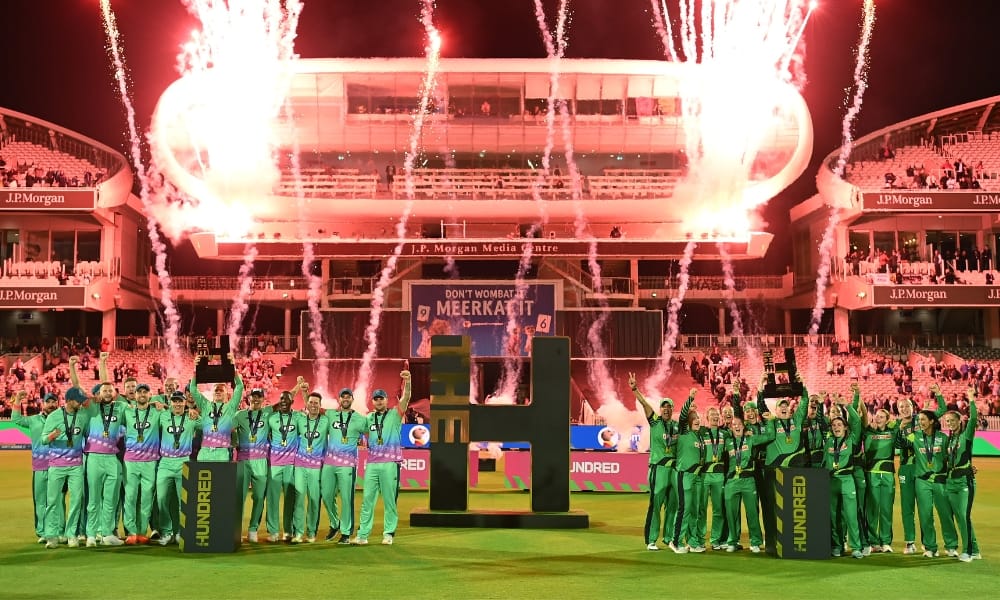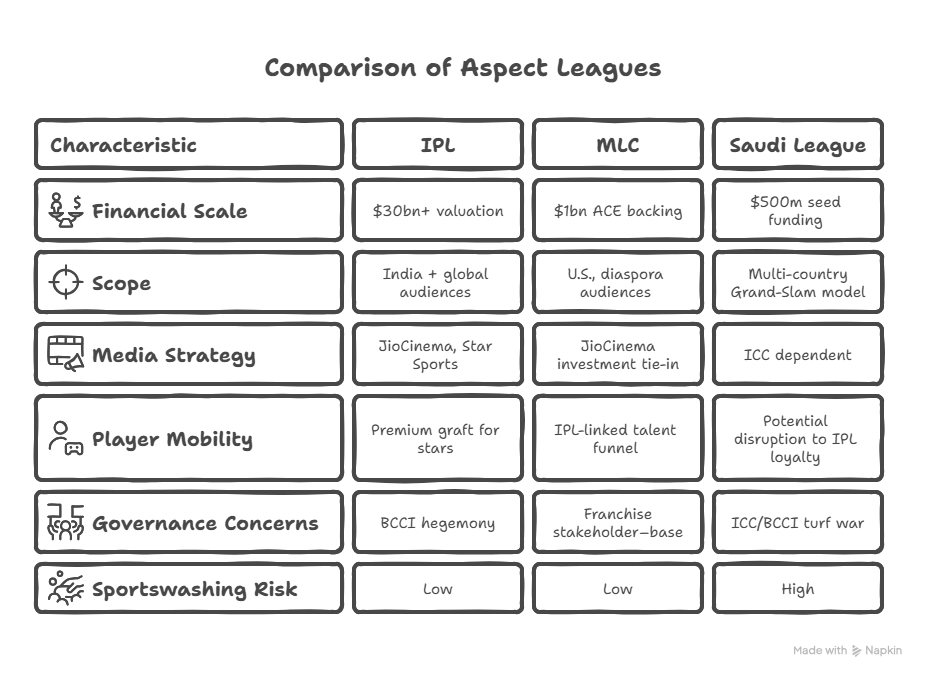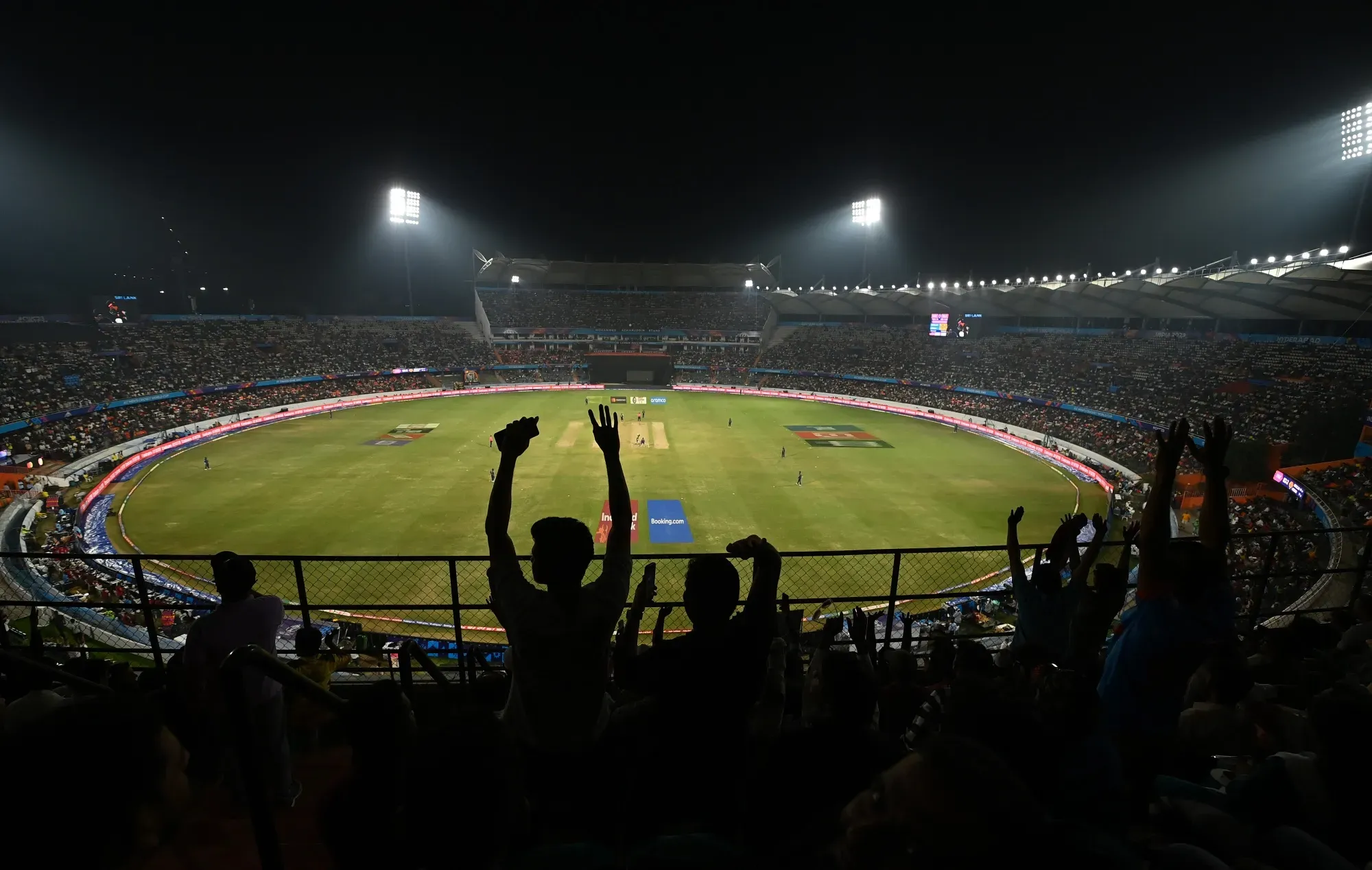Inside the Billion-Dollar Fight to Own Cricket: India, the U.S., and Saudi Arabia’s Global Power Play
India, the U.S., and Saudi Arabia are battling for control of cricket’s billion-dollar future—on and off the pitch.

Cricket is no longer just a game. It’s the next frontier in international finance and influence.
In 2025, cricket will become a battleground where economic ambition meets geopolitics. The massive value of India's IPL, the rapid growth of the U.S.’s Major League Cricket (MLC), and Saudi Arabia’s quiet investments have reshaped the sport through money and global strategy. But who benefits when national brands and sovereign wealth fund interests come together?
The IPL: India’s Crown Jewel
The Indian Premier League (IPL) is the sport’s richest franchise tournament. Its media rights alone brought in US$ 6.2 billion for the 2023–27 cycle. This amount surpasses the Premier League and is second only to the NFL in global value.
Saudi Arabia’s PIF-backed SRJ Sports is negotiating to put the IPL into a holding company worth over $30 billion. They are looking for a $5 billion equity investment.
Reports from Bloomberg, Mint, and Economic Times say these high-level talks took place during MBS’s visit to India in September 2023.
Implications:
A Saudi stake would bring in new money and global goals—expanding the IPL beyond India, entering new broadcasting markets, and increasing franchise values. However, this could also raise concerns about governance, national identity, and cultural ownership.
Major League Cricket: America’s New Frontier
MLC, with a $1 billion ACE investment, will launch its third season in mid-2025, growing from six to ten teams.
Prominent IPL ownership groups—like Knight Riders, Mumbai Indians, and Chennai Super Kings—have invested in MLC franchises.
Indian media group Viacom18 has secured broadcasting rights for MLC matches, increasing cross-border exposure.
Implications:
This shows the globalization of cricket—harnessing the U.S. market’s funds and immigrant fan base, while using IPL experience for investment strategy. MLC aims to be a significant player, not just a niche league.
Saudi Arabia’s Own T20 League: A Global Gambit
SRJ Sports Investments, linked to Saudi Arabia, plans an eight-team global T20 league, with $500 million in initial funding.
The league will operate at four international venues and needs ICC approval and cooperation from boards like the BCCI.
Its goal is to share cricket wealth among smaller nations, keeping Test cricket viable while forming a new T20 framework.
Implications:
It could further monetize global cricket but might also create tension. India’s interest in retaining its star players within the IPL could conflict with the appeal of a Saudi-backed league. Managing talent and scheduling will be crucial.
Media Rights & Player Migrations
The IPL’s domestic and digital rights deal was $6.2 billion, resulting in around 350 billion streaming minutes, clearly dominating viewership.
MLC broadcasts on JioCinema and Sports18 ensure U.S. tournaments reach important Indian markets.
Players like Pat Cummins, Travis Head, and Rashid Khan are already moving among IPL, MLC, The Hundred, and the proposed Saudi league.
Implications:
Media rights drive the value of the sport—broadcasting is key to cricket’s financial world. Player movements indicate a developing marketplace for cricket talent, similar to football’s transfer system.
Sportswashing & Geopolitical Backdrop
Saudi investments in sports—like LIV Golf, Newcastle United, and now cricket—face scrutiny as part of a potential sportswashing strategy.
Critics claim these efforts overlook human rights issues, while supporters argue they represent diversification and soft power.
Cricket boards and investors must balance public perception with returns carefully.
Implications:
Will cricket become a tool for state branding? With its global following, decisions made by cricket boards will carry significant political and moral weight.
Clash & Convergence: MLC vs IPL vs Saudi League

Financial Stakes & Market Dynamics
IPL franchise valuations have topped £5 billion, with some like RCB valued at up to $2 billion, due to increasing revenue models.
Saudi Arabia's $5 billion proposal could double swap markets, cable rights, and global league licensing.
MLC’s approach reflects traditional franchise finance tailored for cricket, combining ecosystem investments with media synergies.
Bottom Line:
The coming years could see cricket’s value grow immensely, with overlapping leagues, wealthy backers, and changing revenue streams reshaping the sport’s financial identity.
Geopolitics on the Field
India:
BCCI’s cautious approach to overseas leagues seeks to protect the IPL and maintain regulatory control.
Tensions with Saudi-backed bids touch on national pride and the politics of sports.
U.S.:
Cricket is emerging as a fresh area for sports investment.
MLC taps into global trends while connecting with diaspora and youth culture.
Saudi Arabia:
Sports have become tools for public diplomacy. Cricket has joined football and golf in this narrative.

The Road Ahead: What Matters Most
ICC decisions will impact player movement, league recognition, and scheduling.
Media rights renegotiations will accompany each new league.
Player workload and welfare must be managed, given overlapping calendars.
Ethics versus economics: Debates over sportswashing will influence sponsorship deals.
Cricket is at a turning point, caught between India’s economic strength, America's expansion, and Saudi ambitions. The game is shifting into a contest for global dominance, shaped by: - Valuations reaching tens of billions.
- Media rights battles are determining market control.
- Player movement creates a global talent market.
- Geopolitical influence raises ethical and branding concerns.
So, the real question isn't whether cricket can go global; it’s about who gets to win. Is cricket the next global monopoly?




